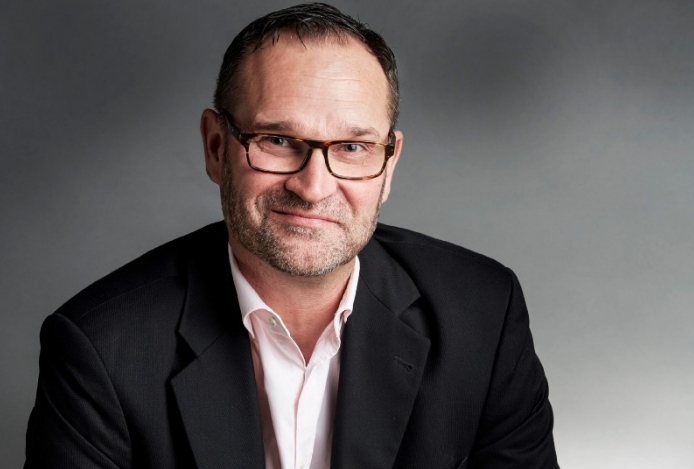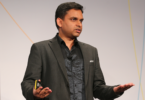Magnus Björsne is CEO of BioVentureHub, an innovation initiative at global pharmaceutical company AstraZeneca’s Gothenburg, Sweden campus. He recently spoke to the Innovator about why big companies rarely came up with radical new ideas, the additional challenges faced by the pharma sector due to complex and uncertain development processes, regulatory issues, long lead-times, large investments, huge financial risks, and high failure rates, and the innovative approach he came up with to solve address those issues.
Q : Why is it that incumbent firms rarely introduce radical product innovations ?
MB : Innovation is to some extent at odds with traditional business development. You can not anticipate the outcome. If you can not predict the outcome you can’t generate a business case and anything you don’t understand or predict will never seldom be subject to an investment.
Q : How is the pharma industry changing and how does that impact the way the company approaches innovation ?
MB : Today we sell mainly hardware: a pill that is not desired by the customer. The customer wants to be well and the pill is a means to obtain that outcome. The payer model is about to change to a pay-per-performance model, which is expected to include digital monitoring of patient’s health, allowing doctors to view the impact of specific doses of medicine on their patients in real-time and the ability to make adjustments accordingly. To do this we need to integrate different type of skill bases into the value proposition. We need to connect sensors to show that pills have been taken and then communicate the impact of the drug to the doctor, which means we need IT solutions to support the products. It means mixing diagnostics with medtech and ICT. A second area where we increasingly need to develop digital solutions is in the selection of patients and collection of data from clinical trials. All of this means we need to integrate ICT and IoT into our innovation process and that is tricky as the business logic in the pharmaceutical business is different than the business logic in information technology. If you are an investor in the IT space you invest over a short period of time and expect a short period of return. Imagine now that we come to such a company about a collaboration about a new drug we are developing and ask whether we should collaborate. All we know is that in the drug industry it takes an average of eight to twelve years to develop a new drug and the liklihood of success is not great. IT investors are not likely to support such a collaboration. So the challenge is how do we create an environment where we can collaborate with these companies in a different way ?
Q : How has the company responded to this challenge ?
MB : We set up a separate legal entity called BioVentureHub, placed it in the middle of the AstraZeneca Gothenburg campus, encouraged close collaboration between salaried employees and entrepreuners from the hub with no strings attached on either side, and took away all financial pressure by securing funding from local government to make the project cost neutral for AstraZeneca, allowing space for experimentation and failure. One-third of the cost of running BioVentureHub, an initiative I started in 2014, is paid by the Swedish Innovation Agency (Vinnova), the regional government of western Sweden and the city of Gothenburg who collectively have invested 19.6 million krona (€1.91 million) A third is paid by Carl Bennet, principal shareholder and chairman of the global medtech company Getinge. Astra-Zeneca’s contribution is to offer 20 million krona (€2 million) in in-kind services and facilities.
Q : Why did the government agree to get involved ?
MB : Sweden is an innovative nation We have strong biotech, diagnostics, medtech and pharmaceutical companies and strong digital players, like Spotify and Skype, but they operate in silos. The idea was to catalyze innovation across these different industries and in doing so strengthen the entire ecoystem.
Q : Can you give us an example of how this has worked in practice ?
MB : I will give you two examples. The first one is a general reflection that an environment like this increasingly make serendipity an important part of the innovation process. With looser ties and a more pragmatic approach to information exchange we expose ourselves to insights and ideas that otherwise would pass unobserved in a structured partnering process. Another example is how the BioVentureHub allows us to work in the intersection of different industry verticals and how that introduce different type of innovation. Together with a BioVenture Hub company called MentorMate, a U.S.-based custom software development company, AstraZeneca has developed a system that aims to improve quality-of- life for patients with severe asthma . The digital patient-monitoring system collects up to 54 different in-body, on-body or external parameters that may impact the patients well-being and risk of an asthma attack. The project has already successfully completed an initial six-month data collection trial. The information generated is being used to build a database for future development of artificial intelligence driven algorithms that could provide an individual risk forecast for patients, allowing them to make necessary adjustments to their behavior or environment to prevent a severe attack. Similar systems are also being developed through the hub collaboration between AstraZeneca and MentorMate, to collect data direct from patients on a daily basis in investigational clinical trials, with the aim of lowering the burden on the patient to participate , by reducing the number of physical visits to the clinic ,and at the same time increasing the data quality.
Q : Do you think this innovation model can be applied to other verticals ?
MB : The robotics division of Swiss-Swedish multinational ABB has copied the model and and other companies, such as automaker Volvo and Holland’s AkzoNobel, a multinational chemical company, have been in discussions with BioVentureHub about how they might adapt the model to their own businesses.
Q :What is unique about the approach and how others might others apply it ?
MB : To me the model is not unique, this is how we used to work with academia and small innovative companies in the past. That is, our interactions with the outside world were predominantly driven by scientific curiosity rather than monetary expectations. The model itself is based on economy of scale in larger organizations combined with the flexibility of resource utilization. As such, it can be implemented in basically any industry segment provided it is adopted to industry specific characteristics, and more importantly, corporate culture. We have treated this as a large experiment in innovation management and as we all know, experimentation demands pragmatism. Support and trust from top management has been critical in getting us to where we are today. Dare to trust and dare to share and things will happen.







